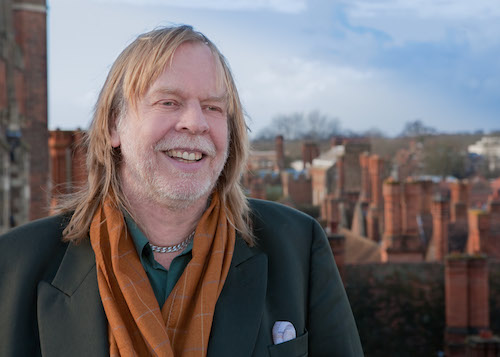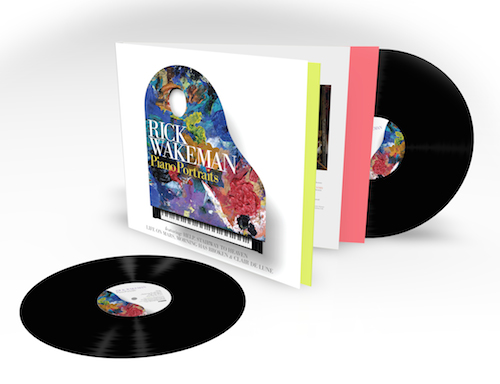
When Yes was formally chosen for induction into the Rock and Roll Hall of Fame’s Class of 2017, the first word out of many fans’ mouths was undoubtedly “finally.” Yes, after all, had been eligible for induction for 22 years and had previously been nominated—and passed over by the Hall’s voters—twice before getting the nod this year.
Wikipedia lists 19 musicians as having been official members of Yes through the years, from the band’s 1968 formation up through the present day. Of those, eight were singled out by the Hall as worthy of induction, and while arguments may rage over which (if any) of the others should have been included, few will deny that the eight—Jon Anderson, Bill Bruford, Steve Howe, Tony Kaye, Trevor Rabin, the late Chris Squire, Rick Wakeman and Alan White—were, at various times, core members who helped shape the band’s sound and keep them moving into new musical areas.
Most of the eight voiced their gratitude publicly. “What an honor this is for us and all involved with the history of this band,” said guitarist Howe, while drummer Bruford remarked, “Yes was like my first girlfriend, to whom I was hopelessly committed. Despite a couple of wrinkles, I’m glad to hear the old girl is in fine shape.”
One member who had a bit of trepidation acknowledging the award, however, was Rick Wakeman, Yes’ keyboardist during several key periods, including the heady early days that produced the landmark prog-rock albums Fragile (1971), Close to the Edge (1972) and Tales from Topographic Oceans (1973). At first, Wakeman voiced displeasure with the length of time it took for Yes to receive its thumbs-up from the hall: “I have no idea if there will be any sort of reunion,” Wakeman posted on his official website, “but whatever happens under no circumstances will I be any part of it. Neither will I be attending.”
Since then, thankfully, he acquiesced and not only attended, he stole the show. And to say he deserves being enshrined in the Rock Hall would be an understatement. His keyboard work was integral to the development of Yes’ music and outside of the group he’s created literally dozens of ambitious, often magnificent works that have displayed the breadth of his talents, from classically inspired works to concept albums based on everything from George Orwell’s 1984 to the 1974 top 5 live album Journey to the Centre of the Earth, based on Jules Verne’s same-titled sci-fi novel.
In 2017, Wakeman released a new project, one of his most endearing to date—and one of the simplest. No orchestras this time, no banks of keyboards. Piano Portraits is just Rick Wakeman, playing that instrument solo. On the recording he tackles a variety of tunes from within different genres: David Bowie’s “Space Oddity” and “Life on Mars,” the Beatles’ “Help!” and “Eleanor Rigby,” classical and traditional pieces like Debussy’s “Clair de Lune” and Tchaikovsky’s “Swan Lake.” He reimagines Led Zeppelin’s “Stairway to Heaven” and 10cc’s “I’m Not in Love” and George Gershwin’s “Summertime” and even throws in a single Yes number, “Wonderous Stories.”
Related: Watch Wakeman and Chris Hadfield perform Bowie’s “Space Oddity”
Best Classic Bands spoke with Wakeman. In the first half of our interview (part two is available here), we asked him all about Piano Portraits. In the second part, we delve deeper into Wakeman’s time with Yes and his current involvement with fellow former members Jon Anderson and Trevor Rabin in a new offshoot band they simply call ARW. But first, we wanted to know where he stands with that Rock and Roll Hall of Fame thing.

At first you said you wouldn’t appear at the ceremony in April, then you said you would. What changed?
Rick Wakeman: They’ve agreed to give a posthumous award to Chris [Squire], to acknowledge his contributions. That was my main bugbear—that so many bands [are inducted] after the main members died. But I’ve agreed that I will be there, because I would like to see Chris’ wife accept that award.
Piano Portraits is a solo piano recording. It seems like something you would’ve thought to make 30 years ago. Why just now?
RW: Like all good ideas, it wasn’t mine. Basically, what happened was that David Bowie and I had quite a long association in the studio and also we were neighbors for four-and-a-half years in Switzerland. We saw each other a lot and when he died I ended up doing a lot of media stuff about my association with him. One of things I did, on BBC Radio 2, our biggest station here [in the U.K.], was to play “Life on Mars.” They webcammed it and a couple of days later I got a call from the BBC and they said that “Life on Mars” had had over two million hits. They said, “A lot of people have said, ‘Why don’t you record it for charity?’” I’m not normally in favor of charity records but I thought this was something David would approve of, and it’s for the right reasons. So I recorded it and we put it out as a single for a cancer charity over here and it was #1 for about six weeks.
How did that evolve into a full album of cover songs?
RW: The next thing I knew I got about six or seven labels saying, “We really think you should do a piano album, with all different kinds of pieces done in your style.” I do one-man piano shows so I thought that would be really good and I spoke to each of the labels concerned to see what they wanted. Universal agreed from the outset on how it should be: a little mixture of classical stuff, some pop stuff, some stuff you wouldn’t expect—all done in a style that they would join nicely together. So I said I’d like to do it and the only other proviso I had was that I knew that certain pieces work, because I’d done them already, but I can’t guarantee how many others will work. So I said, “If I start it and I come back to it after a few weeks, and I can’t make it work, we’ll have to shake hands and call it a day.” So I spent weeks in the studio. What was very important was that every piece had to be a performance. It couldn’t be edited together. I took plenty of time in doing it. Not every piece that I wanted to do initially worked. For example, “Bohemian Rhapsody.” I couldn’t make it work, however hard I tried.

You did tackle “Stairway to Heaven” though.
RW: I wanted to do that and it worked. I couldn’t believe it! I thought it was never gonna work but it does. So I learned very quickly there were no rules.
How did you come up with the piano arrangements?
RW: How I normally work is first I will sit down at the piano at home and take the main theme. Then I will play around with it in different keys—a good melody you can do a lot with. Then I look at the original record and think, how much of that format do I want to keep? Then I will sketch out various ways of doing it and when we get into the studio, I will do maybe half a dozen different versions. What will develop is there will be one where you go, “This is how it has to be.”
Related: Review of Anderson-Rabin-Wakeman concert
Right from the first track, “Help!,” you’re taking these familiar melodies to new places.
RW: Taking other people’s music and doing variations on it is nothing new. Classical composers have been doing it for many years. I learned many years ago, from speaking to various composers, that they were interested in how the performers played their music, because they could see things in the music that the composer couldn’t. It’s not anything new to play around with music. What is important is that if I felt what I was doing did no harm to the original, then it was justified.
You only include one Yes tune on the album, “Wonderous Stories.” Why that one?
RW: I chose “Wonderous Stories” because it was the piece of music that brought me back to Yes in 1976. I left in May 1974 and two years later I got a call from Jon [Anderson], who was in Switzerland at the time. He said, “Rick, can I send you a cassette?” and I said of course. There were two pieces on it: one was him playing acoustic guitar and singing “Wonderous Stories.” The other track was “Going for the One,” again acoustic guitar and a bit of the main theme. I called him up and I said, “These are great. This is what we should have been doing back in 1974 after Close to the Edge.” He asked me to work with him on it and I said, “If everything is gonna be like this, I’m your man.” So I flew to Switzerland and that was when, in 1976, Jon and I really cemented our friendship. It was all down to “Wonderous Stories” being on that cassette. So that particular piece has a selfish place in my heart.
Read part two of our conversation with Rick Wakeman here.
Watch a brief documentary on the making of Piano Portraits
[easy_sign_up title=”Sign up for the Best Classic Bands Newsletter”]
- Over Under Sideways Down: Making Sense of the Yardbirds’ Album Releases - 05/27/2024
- 17 Classic Chuck Berry Covers - 05/18/2024
- ‘Brandy’ by Looking Glass (It’s a Fine Song) - 05/18/2024

